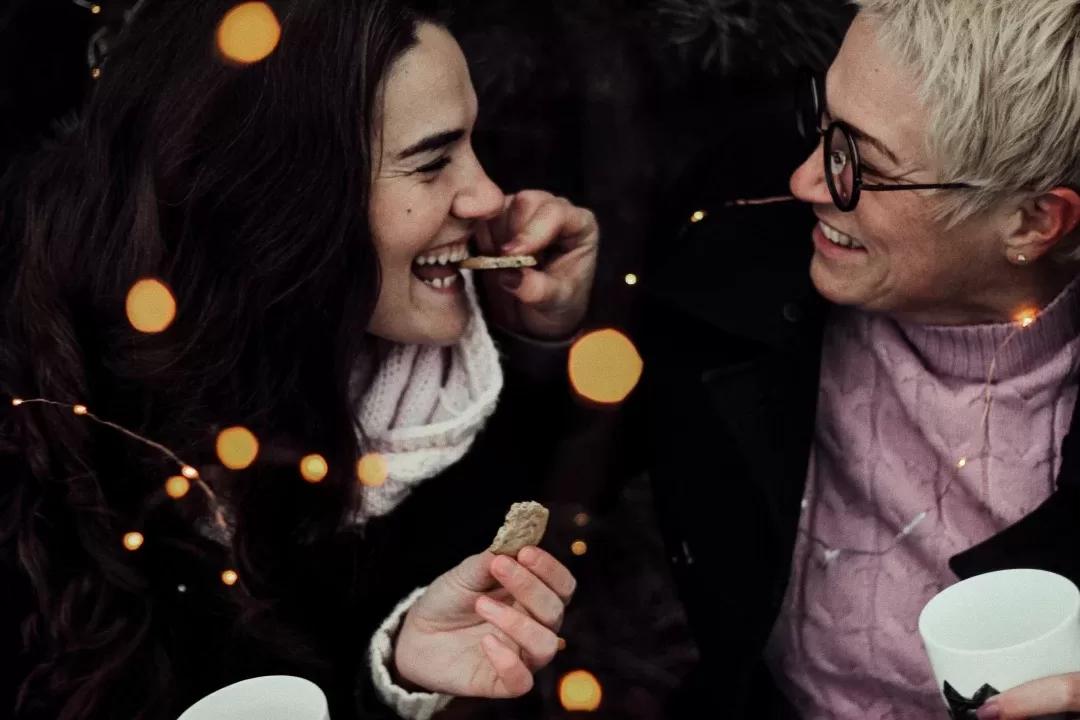Imagine stepping back in time to the enchanting era of the 1960s, where love blossomed amidst the flickering lights of the silver screen. In this article, you will be transported to a world filled with timeless romance and heartwarming tales as we explore the top romantic movies of the 60s. From epic love stories that stood the test of time to unforgettable moments that captivated audiences, these films continue to inspire us with their enduring charm and passion. So grab some popcorn and get ready to immerse yourself in the magic of these classic love stories.
1. Doctor Zhivago (1965)
Plot Summary
In the classic film “Doctor Zhivago,” directed by David Lean, the story is set against the backdrop of the Russian Revolution. Yuri Zhivago, played by Omar Sharif, is a talented poet and physician who finds himself torn between two women—his wife, Tonya, and the beautiful Lara, portrayed by Julie Christie. As the political turmoil intensifies, Yuri and Lara’s paths cross multiple times, leading to a passionate love affair. The film beautifully captures the struggles and sacrifices of love amidst war and revolution, making it a timeless classic.
Romantic Elements
“Doctor Zhivago” is filled with captivating romantic elements that leave audiences mesmerized. The chemistry between Yuri and Lara is palpable, drawing viewers into their intense and forbidden love affair. Their longing gazes, stolen moments, and heartfelt conversations evoke a sense of longing and desire that resonates with audiences of all ages. The film’s sweeping landscapes and stunning cinematography further enhance the romantic atmosphere, creating a visually enchanting experience.
Critical Reception
Upon its release, “Doctor Zhivago” received widespread critical acclaim for its epic storytelling and powerful performances. The film was praised for its ability to balance grand-scale political events with intimate, emotional moments. Omar Sharif’s portrayal of Yuri Zhivago was hailed as one of his career-best performances, capturing the character’s depth and complexity. Julie Christie’s portrayal of Lara also earned accolades, with her emotional range and vulnerability resonating with audiences. “Doctor Zhivago” ultimately became a beloved classic, standing the test of time as one of the most iconic romantic films of the 60s.
2. Breakfast at Tiffany’s (1961)
Plot Summary
“Breakfast at Tiffany’s,” directed by Blake Edwards, is a delightful romantic comedy that follows the story of Holly Golightly, played by the legendary Audrey Hepburn. Holly, a free-spirited and unconventional socialite, forms an unlikely connection with her new neighbor, a struggling writer named Paul Varjak, portrayed by George Peppard. As their friendship grows, they discover a deep bond and navigate the complexities of love and personal identity. The film’s setting in New York City adds an extra layer of charm and allure to the story.
Romantic Elements
“Breakfast at Tiffany’s” is renowned for its timeless romantic elements and the iconic portrayal of Audrey Hepburn as Holly Golightly. Audrey’s delicate and captivating performance brings Holly to life as a complex and enigmatic character, making viewers fall in love with her. The budding romance between Holly and Paul is filled with moments of playful banter, tender gestures, and heartfelt confessions. Their chemistry is electric, and audiences can’t help but root for their love to conquer all obstacles.
Critical Reception
Critics universally praised “Breakfast at Tiffany’s” for its enchanting performances, stylish cinematography, and memorable screenplay. Audrey Hepburn’s portrayal of Holly Golightly is often regarded as one of her most iconic roles, earning her an Academy Award nomination for Best Actress. The film’s exploration of love, identity, and personal growth struck a chord with audiences worldwide and contributed to its enduring popularity. “Breakfast at Tiffany’s” continues to be celebrated as an unforgettable romantic classic that captures the essence of love in the 60s.
3. West Side Story (1961)
Plot Summary
“West Side Story,” directed by Jerome Robbins and Robert Wise, is a timeless musical adaptation of Shakespeare’s “Romeo and Juliet.” Set in New York City, the film tells the story of Tony and Maria, played by Richard Beymer and Natalie Wood, respectively. Tony, a former member of a white gang called the Jets, falls in love with Maria, the sister of Bernardo, the leader of the rival Puerto Rican gang, the Sharks. Their love faces immense challenges due to the tensions between the two gangs, leading to a tragic and heartbreaking conclusion.
Romantic Elements
“West Side Story” presents an intense and passionate love story that transcends social and cultural boundaries. Tony and Maria’s connection is undeniable from their first encounter, and their love blossoms amidst the chaos and violence surrounding them. The film beautifully captures their forbidden love through breathtaking dance sequences and heart-wrenching musical numbers. The choreography and music serve as vehicles to express the depth of their emotions and the obstacles they face.
Critical Reception
Upon its release, “West Side Story” received critical acclaim for its groundbreaking storytelling, powerful performances, and spectacular musical numbers. The film won ten Academy Awards, including Best Picture, making it one of the most decorated musical films in history. The chemistry between Richard Beymer and Natalie Wood, combined with the film’s innovative choreography and powerful score, captivated audiences worldwide. “West Side Story” continues to be celebrated for its poignant exploration of love, prejudice, and the human spirit.
4. Bonnie and Clyde (1967)
Plot Summary
“Bonnie and Clyde,” directed by Arthur Penn, tells the thrilling and tragic true story of the infamous criminal couple, Bonnie Parker, portrayed by Faye Dunaway, and Clyde Barrow, played by Warren Beatty. The film follows their exhilarating and ultimately destructive journey as they rob banks and evade the law during the Great Depression era. Alongside their criminal escapades, a passionate romance blossoms between Bonnie and Clyde, cementing their place as one of history’s most infamous love stories.
Romantic Elements
Despite their criminal lifestyle, Bonnie and Clyde’s love is portrayed as passionate and sincere. The film explores their connection through intimate moments of vulnerability and shared adrenaline-fueled adventures. Bonnie’s yearning for excitement and Clyde’s desire for companionship create a bond that transcends societal norms and captivates audiences. Through their actions, audiences witness the complexities of their relationship, the risks they take for each other, and the tragedy that ultimately befalls them.
Critical Reception
“Bonnie and Clyde” was met with divided critical reception upon its release. While some lauded the film’s innovative storytelling, bold cinematography, and powerful performances, others criticized its glamorization of violence. However, as time went on, “Bonnie and Clyde” gained recognition for its impact on cinema and its portrayal of a tumultuous love story. Faye Dunaway’s portrayal of Bonnie Parker garnered high praise for her ability to capture the character’s strength, charisma, and vulnerability. The film’s unapologetic exploration of love and crime continues to fascinate audiences and solidify its status as a classic love story of the 60s.

This image is property of images.pexels.com.
5. The Sound of Music (1965)
Plot Summary
“The Sound of Music,” directed by Robert Wise, is a beloved musical that tells the heartwarming story of Maria, played by Julie Andrews, a young woman who becomes a governess for the seven children of the widowed Captain Georg von Trapp, portrayed by Christopher Plummer. As Maria and the children form a special bond through the magic of music, Maria and Captain von Trapp’s initial tension blossoms into a beautiful love story. Set against the backdrop of Nazi-occupied Austria, the film celebrates the power of love, family, and the triumph of the human spirit.
Romantic Elements
“The Sound of Music” is brimming with romance, from the tender moments between Maria and Captain von Trapp to the enchanting musical numbers they share. Their love story evolves slowly, as they navigate their own personal challenges and societal expectations. Maria’s effervescent spirit and love for the von Trapp children bring joy and healing to the Captain’s broken heart, while he, in turn, provides stability and protection. Their shared love for music becomes a language of its own, bridging the gap between them and reinforcing the depth of their connection.
Critical Reception
Upon its release, “The Sound of Music” received widespread critical acclaim for its memorable music, captivating performances, and heartfelt storytelling. The film won five Academy Awards, including Best Picture, solidifying its place as one of the most beloved movie musicals of all time. Julie Andrews’ portrayal of Maria earned her an Academy Award nomination for Best Actress and remains one of her most iconic roles. Audiences and critics alike praised the film’s ability to transport viewers into a world of enchantment, love, and hope. “The Sound of Music” continues to resonate with audiences across generations, exemplifying the enduring power of love in the 60s.
6. Roman Holiday (1953)
Plot Summary
“Roman Holiday,” directed by William Wyler, is a timeless romantic comedy that showcases the magical chemistry between Audrey Hepburn and Gregory Peck. Hepburn plays Princess Ann, a young royal who escapes her palace confines during a diplomatic visit to Rome. She encounters Joe Bradley, an American journalist portrayed by Peck, who promises her an unforgettable day of freedom and adventure. As Ann and Joe explore the historic city together, their relationship evolves from mere companionship to a blossoming romance that challenges societal expectations.
Romantic Elements
“Roman Holiday” is a quintessential romantic film that embraces the beauty of spontaneity, discovery, and love. Audrey Hepburn’s luminous presence and natural charm as Princess Ann captivates audiences, while Gregory Peck’s charismatic portrayal of Joe Bradley adds a touch of playfulness and tenderness to their interactions. As they share unforgettable moments exploring Rome’s iconic landmarks, their connection deepens, and a heartfelt romance unfolds. The film beautifully explores the notion of finding love in unexpected circumstances and the bittersweet reality of letting go.
Critical Reception
“Roman Holiday” received widespread critical acclaim upon its release and solidified Audrey Hepburn’s status as a rising star in Hollywood. The film’s enchanting storyline, charming performances, and picturesque portrayal of Rome struck a chord with audiences. Audrey Hepburn won an Academy Award for Best Actress for her portrayal of Princess Ann, cementing her place as one of Hollywood’s most beloved actresses. Critics praised “Roman Holiday” for its ability to capture the essence of youthful adventure, self-discovery, and love in a way that resonated with audiences worldwide.

This image is property of images.pexels.com.
7. To Kill a Mockingbird (1962)
Plot Summary
“To Kill a Mockingbird,” based on Harper Lee’s beloved novel, was brought to life on the silver screen by director Robert Mulligan. The film tells the powerful story of the Finch family in the racially-charged town of Maycomb, Alabama. Through the eyes of Scout, played by Mary Badham, the audience witnesses her father Atticus Finch, portrayed by Gregory Peck, fighting for justice and equality in a deeply divided community. While not a traditional romance film, “To Kill a Mockingbird” explores themes of love, compassion, and the courage to stand up for what is right.
Romantic Elements
Though romance is not the central focus of “To Kill a Mockingbird,” the film portrays a different kind of love—love for humanity and the pursuit of justice. Atticus Finch’s unwavering dedication to defending Tom Robinson, a black man falsely accused of rape, showcases the power of love in its purest form. Atticus serves as a role model to his children, teaching them the importance of empathy and understanding. The film also touches upon Scout’s innocent admiration for her friend Dill, illustrating the beginning stages of young love and awakening emotions.
Critical Reception
Upon its release, “To Kill a Mockingbird” was met with widespread critical acclaim for its poignant and sensitive exploration of themes such as racism and prejudice. The film’s steadfast commitment to upholding justice and moral integrity resonated with audiences worldwide. Gregory Peck’s towering performance as Atticus Finch earned him an Academy Award for Best Actor and cemented his place in cinematic history. “To Kill a Mockingbird” continues to be celebrated for its timeless messages of compassion, understanding, and the indomitable power of love.
8. A Hard Day’s Night (1964)
Plot Summary
Directed by Richard Lester, “A Hard Day’s Night” showcases the iconic British rock band The Beatles at the peak of their fame. The film documents a fictionalized day in the life of the band members—John Lennon, Paul McCartney, George Harrison, and Ringo Starr—as they navigate the whirlwind of Beatlemania. Alongside capturing the band’s energetic performances and infectious music, the film also introduces a romantic subplot involving Paul McCartney’s character and a young woman named Susan.
Romantic Elements
While “A Hard Day’s Night” primarily focuses on the band’s music and their humorous antics, the film does include a romantic storyline that adds an extra layer of charm. Paul McCartney’s character, referred to as Paul, develops a connection with Susan, a young woman he meets during their London escapades. Their interactions are light-hearted and playful, demonstrating the youthful and innocent romance of the era. Although their love story is not the central narrative, it adds another dimension to the film’s vibrant atmosphere.
Critical Reception
“A Hard Day’s Night” was not only a commercial success but also received widespread critical acclaim for its energetic performances, innovative filmmaking techniques, and infectious charm. Critics embraced the film as a groundbreaking musical comedy that captured the spirit of the Swinging Sixties and The Beatles’ cultural impact. Richard Lester’s direction and the band members’ natural charisma resonated with audiences, and “A Hard Day’s Night” became an iconic representation of the 60s youth culture. The film’s joyful celebration of music, humor, and young love continues to delight audiences, solidifying its place as a classic of the era.

This image is property of images.pexels.com.
9. Butch Cassidy and the Sundance Kid (1969)
Plot Summary
Directed by George Roy Hill, “Butch Cassidy and the Sundance Kid” is a Western buddy film that follows the thrilling adventures of two charismatic outlaws, Butch Cassidy and the Sundance Kid, played by Paul Newman and Robert Redford, respectively. As they elude law enforcement and confront numerous challenges, their friendship deepens, and their bond becomes inseparable. While not primarily a romance film, the connection between Butch and Sundance exhibits aspects of loyalty, camaraderie, and a deep understanding that mirrors the foundations of love.
Romantic Elements
“Butch Cassidy and the Sundance Kid” showcases a uniquely strong bond between its titular characters. Their friendship is characterized by unwavering support, unspoken understanding, and playful banter. They rely on each other in moments of danger, finding solace and strength in their togetherness. The film’s portrayal of their partnership exemplifies the importance of companionship and an unbreakable connection, akin to the elements found in a lasting romance.
Critical Reception
Upon its release, “Butch Cassidy and the Sundance Kid” received critical acclaim for its entertaining blend of action, humor, and heartfelt storytelling. The film’s charismatic performances from Paul Newman and Robert Redford garnered widespread praise and turned the actors into iconic Hollywood stars. Audiences and critics alike admired the film’s ability to balance thrilling sequences with moments of emotional depth. While not a traditional love story, “Butch Cassidy and the Sundance Kid” elevated the notion of friendship and showcased the power of an unbreakable bond.
10. My Fair Lady (1964)
Plot Summary
Directed by George Cukor, “My Fair Lady” is a captivating musical based on the Broadway play of the same name, which was in turn inspired by George Bernard Shaw’s classic play, “Pygmalion.” The film tells the story of Eliza Doolittle, a Cockney flower girl played by Audrey Hepburn, who undergoes a transformative journey when she becomes the subject of a wager between phonetics professor Henry Higgins, portrayed by Rex Harrison, and Colonel Pickering, played by Wilfrid Hyde-White. As Eliza learns to speak and act like a lady, a complex relationship develops between her and Professor Higgins.
Romantic Elements
While “My Fair Lady” is primarily a tale of self-discovery and personal growth, the film explores the dynamics of love and attraction. Eliza’s transformation captures the attention of Professor Higgins, who becomes increasingly infatuated with her intelligence, grace, and newfound confidence. The film features iconic moments of tension, banter, and emotional vulnerability between Eliza and Professor Higgins, culminating in a captivating dance sequence that beautifully encapsulates their evolving relationship.
Critical Reception
“My Fair Lady” was met with critical acclaim and commercial success upon its release. The film’s lavish production values, memorable musical numbers, and Audrey Hepburn’s enchanting performance were highly praised. Rex Harrison’s portrayal of Professor Higgins also received acclaim for his nuanced portrayal of a complex character. “My Fair Lady” won multiple Academy Awards, including Best Picture, solidifying its place as one of the quintessential movie musicals of the 60s. The film’s exploration of love, identity, and societal expectations resonated with audiences, making it a beloved classic that continues to be celebrated today.

This image is property of images.pexels.com.


